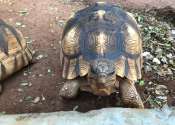Copper-based nanomaterials can kill cancer cells in mice
An interdisciplinary team of scientists from KU Leuven, the University of Bremen, the Leibniz Institute of Materials Engineering, and the University of Ioannina has succeeded in killing tumour cells in mice using nano-sized ...






